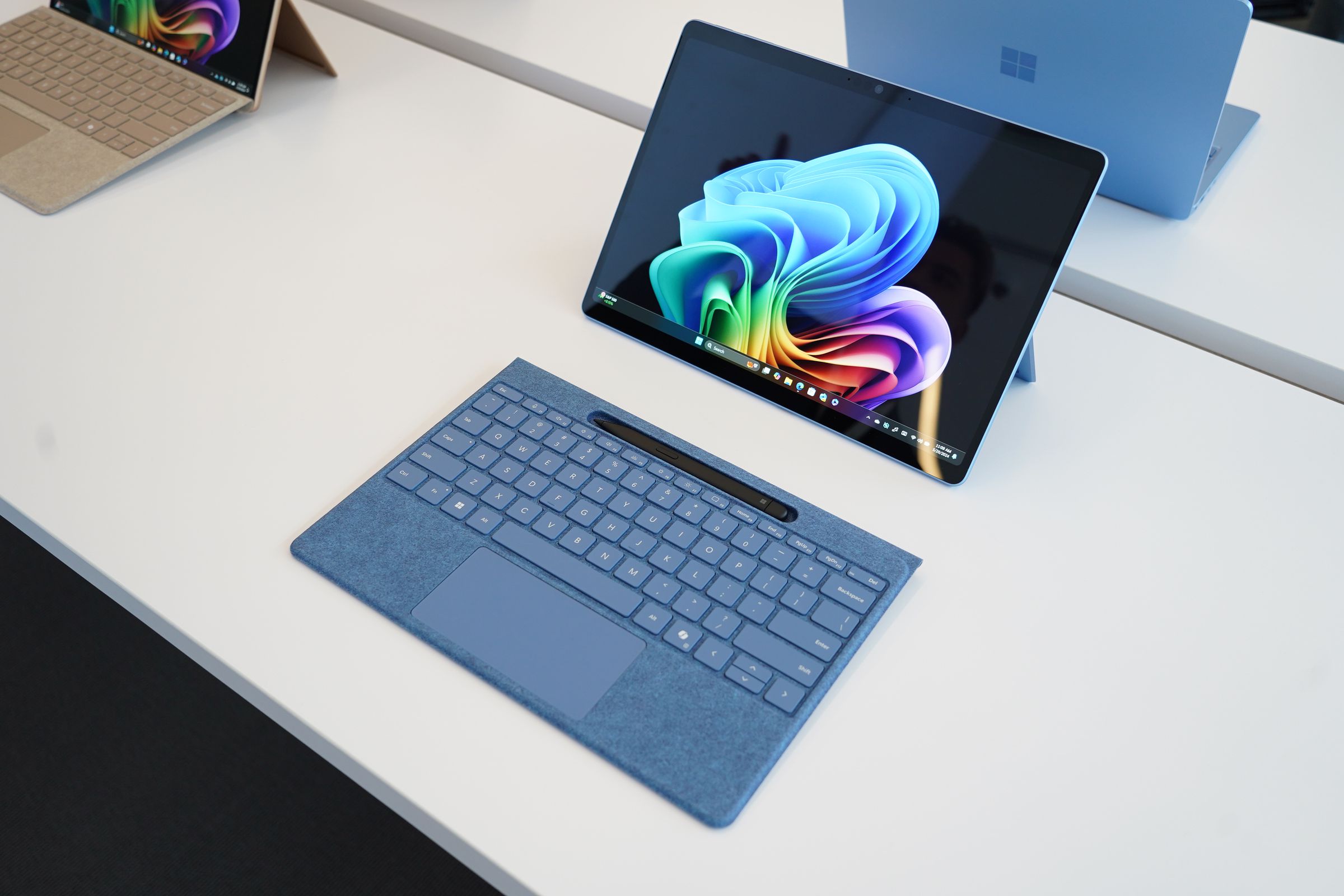Microsoft has just announced a new Surface Pro, which is part of the new wave of Copilot Plus PCs. The new Pro, which is technically the “11th edition,” starts at $999, comes in four colors, and is powered by Qualcomm’s new Snapdragon X processors. The base model comes with a 13-inch LCD screen, but you can upgrade to an OLED in some of the higher-end models. The chip is the star of the show here: it’s what enables a lot of the AI features Microsoft touted onstage, what makes possible the 14-hour battery life Microsoft promises, and more.
The basic silhouette of the hardware hasn’t changed much, save for the new Flex Keyboard attachment. The tablet with an integrated kickstand has been a Surface staple for years now, and Microsoft continues to refine it rather than trying to reinvent it.
I got a chance to try this new Flex Keyboard, and I’m surprised at how much more stable it is than previous models. There’s no noticeable bounce when you’re using it on a desk, and even on my lap, it felt a lot more study than the previous Surface Pro keyboards.
You can even use this keyboard away from the Surface Pro as it automatically switches over to a Bluetooth connection once you undock it. Microsoft has a tiny battery inside the base to enable this and the new haptic feedback on the trackpad in this Flex Keyboard. The haptic feedback doesn’t feel as prominent as on the Surface Laptop Studio 2, but it’s still nice to have inside this new keyboard.
The trackpad is also improved here, so vertically, it’s a little closer to the bottom row of keys, and it’s also wider than before. That makes it feel a little more comfortable to use during my brief hands-on.
The other big upgrade on this new Surface Pro is the 13-inch OLED display. It will only be available on the top-tier Snapdragon X Elite lineup, so you’ll have to pay extra to get this, but the display looks super crisp. I own a 32-inch OLED display at home that’s great for gaming, and I’m never going back to anything that’s not OLED anymore, so it’s great to see the option on the Surface Pro now.
Microsoft isn’t saying which OLED panel it’s using on the Surface Pro, but it’s not a tandem one from LG Display. The viewing angles are solid, but there’s no anti-reflective coating here, so under a bright light, you will see reflections. I didn’t get a chance to use this outside yet, but the Surface Pro seemed to handle the natural light hitting the display well enough inside Microsoft’s demo area.
The rest of the Surface Pro is very similar to the models before it. There are two USB-C ports, Microsoft has added Wi-Fi 7, and the device is a little under two pounds in weight. That means it’s not noticeably thinner or lighter than the previous models, but Microsoft is promising big battery life improvements to make these devices a lot more efficient than before.
Overall, the Surface Pro feels very responsive just like any other Windows laptop. It’s not obvious that there’s a Qualcomm chip inside here, and if Microsoft’s big promises of app compatibility, performance, and battery life play out, then this could be a very interesting moment for the next Windows devices like the Surface Pro.

Leave a Reply